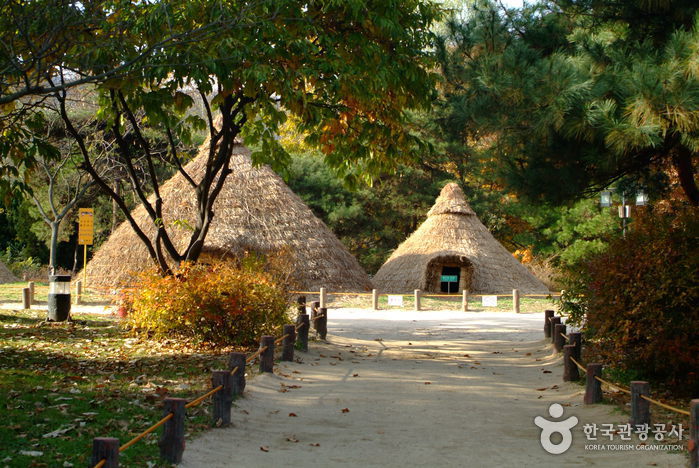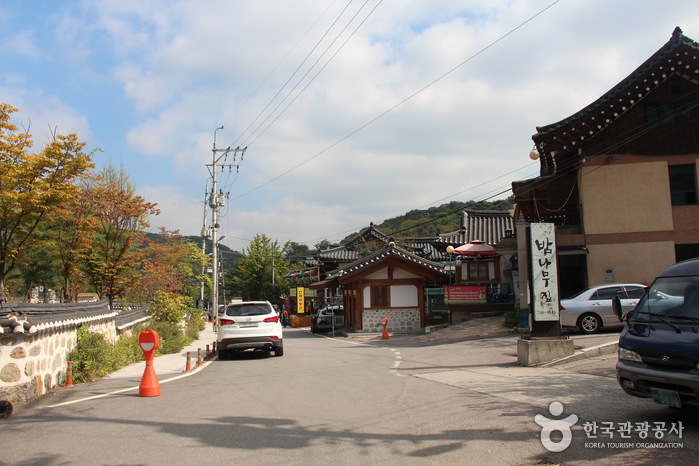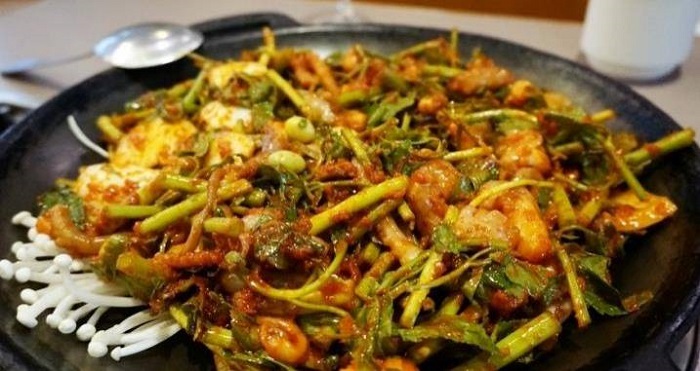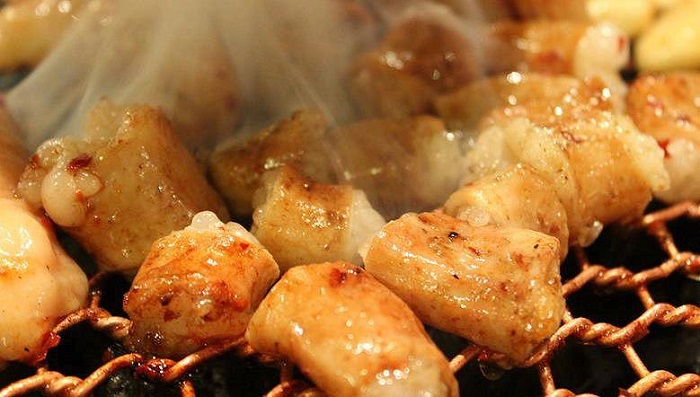Archaeological Site in Amsa-dong, Seoul (서울 암사동 유적)
7.0Km 2021-07-27
875, Olympic-ro, Gangdong-gu, Seoul
+82-2-3425-6520
The Archaeological Site in Amsa-dong reproduces the lifestyle of the Neolithic Era. Even the entrance gate is shaped like a huge dolmen and the trash cans are ancient diagonal-line patterned earthenware. Archaeological Site in Amsa-dong was excavated in 1925 when a flood washed away the soil on the banks of the Hangang River and exposed a large number of diagonal-line patterned earthenware. After several excavations, the Archaeological Site in Amsa-dong was established.
The site was a location for a massive colony, thus many ancient buildings, stone axes and stone arrows have been uncovered as well as countless diagonal-line patterned earthenware. The housing site is round with a spot in the center for fire. The site is colossal and possesses nine mud huts, two exhibition halls displaying ancient artifacts and an open mud hut where visitors can experience life in the Neolithic Era. The site offers many attractions such as mud huts and promenades. Archaeological Site in Amsa-dong is also very educational for children and families who want to learn and experience the Neolithic Age.
Traditional Food Town around Namhansanseong Fortress (남한산성 전통음식마을)
7.0Km 2021-03-17
731, Namhansanseong-ro, Gwangju-si, Gyeonggi-do
+82-31-762-3010
The Traditional Food Town around Namhansanseong Fortress has many restaurants offering rice, dotorimuk (acorn jelly salad), tojongdak (whole chicken) dishes, and other traditional dishes. The area embraces almost 300 years of Korean history and the restaurants were built in traditional hanok-style buildings around Namhansanseong Fortress, a military stronghold from the Joseon dynasty.
Namhansanseong Provincial Park [UNESCO World Heritage] (남한산성도립공원 [유네스코 세계문화유산])
7.0Km 2024-02-29
731 Namhansanseong-ro, Namhansanseong-myeon, Gwangju-si, Gyeonggi-do
+82-31-746-1088
Namhansanseong was a fortress that protected the southern approaches to the capital during the Baekje kingdom (18 B.C. – 660 A.D.) and the Joseon dynasty (1392-1897). During the Qing invasion of Joseon in 1636, King Injo of Joseon (reigned 1623-1649) sought refuge here and constructed Haenggung, a temporary palace. Subsequently, it became the administrative center of the Gwangju region, and today, it is a site where many cultural properties are preserved.
Cheonghaejin(청해진)
7.0Km 2021-04-13
33 Seongnae-ro 6-gil Gangdong-gu Seoul
+82-2-484-1551
It is a 100-year-old store that has been loved by customers for a long time while maintaining its reputation for over 30 years. This Korean dishes restaurant is located in Gangdong-gu, Seoul. The representative menu is seafood pancake.
E-Mart - Cheonho Branch [Tax Refund Shop] (이마트 천호)
7.0Km 2024-04-22
1017, Cheonho-daero, Gangdong-gu, Seoul
-
Gyeonggi Janggyeongsa Temple (장경사(경기))
7.0Km 2025-01-14
676, Namhansanseong-ro, Gwangju-si, Gyeonggi-do
+82-31-743-6548
Janggyeongsa Temple is located in Namhansanseong Fortress. Namhansanseong Fortress, which protected Seoul along with Bukhansanseong Fortress, was built at the same time as Janggyeongsa Temple in 1638, during the 16th year of King Injo. Warrior monks from all eight provinces throughout the country helped with the construction. Janggyeongsa Temple is the only remaining temple among nine such temples where military groups made up of monks stayed for trainings.
Amsa-dong Prehistoric Site Museum (암사동선사유적박물관)
7.0Km 2023-12-22
875 Olympic-ro, Gangdong-gu, Seoul
The archaeological sites in Amsa-dong, Seoul, were a collective settlement where people lived during the Neolithic Age about 6,000 years ago and became known to the world after the sand dunes along the Hangang River caved in during the great flood of 1925, exposing numerous pieces of comb-patterned pottery. The area designated as a historic site in 1979, and excavation of the site took place from 1981 to 1988. The cultural heritage protection area was expanded to a total area of 78,133㎡. Currently, nine Neolithic dugout huts and one experiential dugout hut have been restored. The exhibitions currently open to the public are Exhibition Hall 1, which displays a restoration of a Neolithic Age dugout, and Exhibition Hall 2, which displays various panels and models to help understand the prehistoric era as a whole.
Jirisan Wangjaebong Heukdwaeji(지리산왕재봉흑돼지)
7.0Km 2021-04-13
26, Sangam-ro, Gangdong-gu, Seoul
+82-2-3426-5120
You can enjoy grilled Heukddoeji (black pork) with a variety of kimchi in soybean powder seasoning. This restaurant's signature menu is grilled black pork. This Korean dishes restaurant is located in Gangdong-gu, Seoul.
Obaltan - Songpa Branch (오발탄 송파)
7.0Km 2021-03-29
206, Wiryeseong-daero, Songpa-gu, Seoul
+82-2-404-0090
This is a house where you can eat charcoal-grilled Daechang (roasted intestine meat). This Korean dishes restaurant is located in Songpa-gu, Seoul. The representative menu is grilled beef large intestine.
![Valleygirl [Tax Refund Shop] (벨리걸)](http://tong.visitkorea.or.kr/cms/resource/20/3314320_image2_1.jpg)


![Namhansanseong Provincial Park [UNESCO World Heritage] (남한산성도립공원 [유네스코 세계문화유산])](http://tong.visitkorea.or.kr/cms/resource/56/2612856_image2_1.jpg)




 English
English
 한국어
한국어 日本語
日本語 中文(简体)
中文(简体) Deutsch
Deutsch Français
Français Español
Español Русский
Русский